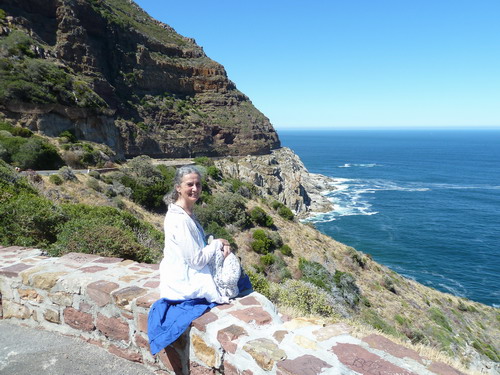The Alexander Technique’s about posture isn’t it?
Well, not really!
It’s true that changes in posture do come about as a result of using the Technique and this photo of fellow Alexander teacher Refia Sacks, out and about in South Africa, illustrates that a nice easy poise is one of the benefits of learning to use use our bodies more freely and effectively in our everyday activities. However, the aim of Alexander Technique lessons is not about improving posture.
Refia Sacks – sitting with casual poise
In AT lessons, we learn how to move around and use our bodies in a coordinated way without tension and it is the quality of our body-use that is all important. As we allow our bodies to work the way they are designed to, our posture does tend to improve. But that is an outcome, not the aim.
Some people manage to retain their good body use into adulthood, without ever having an Alexander Technique lesson. However, most adults lose the free and often graceful movements that we had as children and often end up rather ‘crumpled’, with a variety of aches and pains. One of the joys of having Alexander lessons is that we can often regain – or find – some of the co-ordination and freedom of movement that is more natural to our bodies.

Natural, easy poise whilst working
I watched this woman in Mexico as she sat quietly working away at her knitting and she demonstrates that adults can indeed sit and work in a relaxed manner, with a lengthened spine and good posture. As she sits in the café, she has a lovely strong back and quiet poise, which allows her arms to move freely as she concentrates and works on her task. Too many people drop their neck and head forwards to do knitting, computing and similar tasks, The result is that they get neck and back pain from their mis-use and from the weight of the head dragging down towards their hands. Such poor posture and body-use can contribute to developing RSI, particularly if there is lots of habitual muscle tension.
I doubt this woman has had AT lessons and there is no knowing how much attention she has paid to thinking about how she uses her body. This woman appears to be comfortable in her body. How many people do you see sitting at desks, pianos and computers, who have a similar free and easy poise and balance in their body as they work?
If you want to re-find your natural poise and freedom of movement and would like to prevent having pain whilst you work, come and try some 1:1 Alexander Technique lessons.
